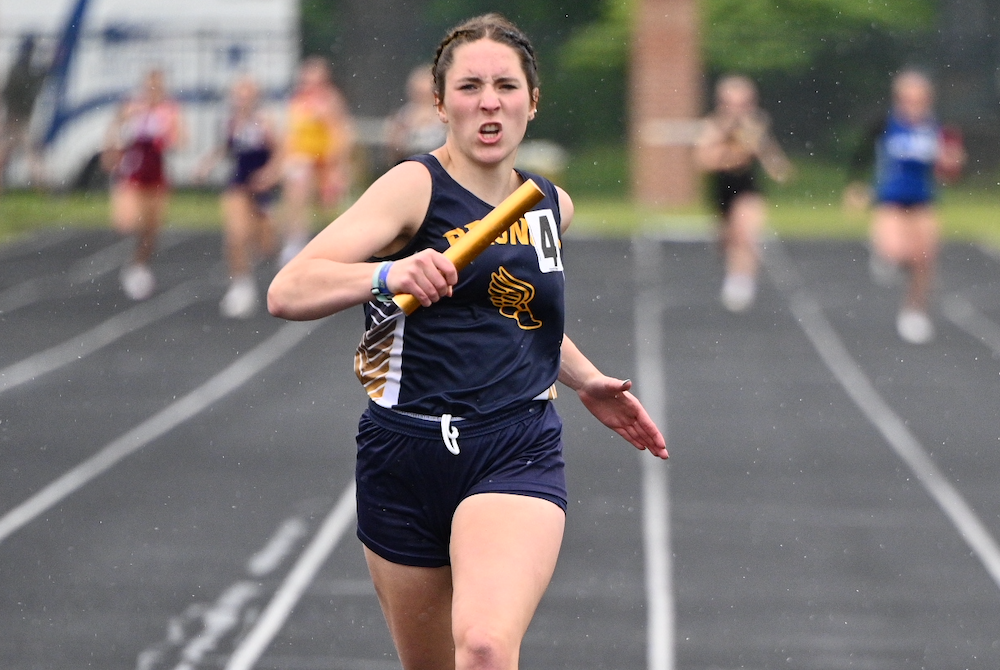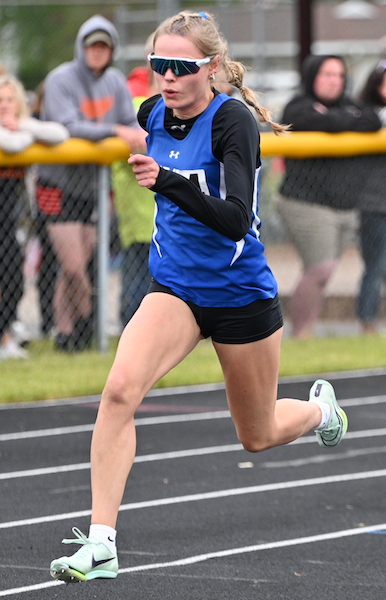
New Math: Division & Multiplication Problems
July 25, 2017
By Jack Roberts
MHSAA Executive Director
This is the second part in a series on MHSAA tournament classification, past and present, that will be published over the next two weeks. This series originally ran in this spring's edition of MHSAA benchmarks.
High school tournament classifications went viral before there was social media and most of us knew what “viral” meant.
Much as a virus infects computers today or has created epidemics of disease around the world for centuries, high school tournament classification – once introduced – tends to spread uncontrollably. Once started, it tends to keep expanding and rarely contracts.
While we are still some distance from providing every team a trophy as a result of expanding high school tournament classification across the country, there is criticism nevertheless that we are headed in that direction – a philosophy which is supposed to exist only in local youth sports for our youngest children.
Michigan could be blamed for all this. Michigan is generally accepted as the first state to provide different classifications for season-ending tournaments for different sized schools. It started a century ago. Today, every state has various classifications for its tournaments in most if not all sports. And it is a bit ironic that Michigan – creator of the classification chaos – more than most other states has kept the number of tournament classes or divisions under control.
Yes, there is evidence that tournament classifications have expanded over the years in Michigan, especially with the relatively recent introduction of tournaments in football and the late 1990s’ move from classes to divisions in most MHSAA tournaments. But the MHSAA Representative Council has held true to its word when it expanded the playoffs for football from four classes to eight divisions: this is needed because of unique factors of football, factors that exist in no other sport; and all other sports should be capped at a maximum of four classes or divisions.
Kentucky is the preeminent defender of single-class basketball. All of its 276 high schools compete for the single state championship for each gender. In Indiana, there are still open wounds from its move in 1998 from one to four classes for its 400 schools in basketball.
Multi-class tournaments have tended to increase the number of non-public school champions, which some states are trying to lower through enrollment “multipliers,” and also tend to increase the number of repeat champions, which some states are trying to affect with “success factors” which lift smaller schools into classifications for larger schools if they take home too many trophies.
While there is considerable evidence that state tournaments do as much bad as good for educational athletics, state associations persist in providing postseason tournaments because, on balance, the experiences are supposed to be good for student-athletes. And once we reach that conclusion it is just a small leap to believe that if the tournaments are good for a few, they must be better for more – which leads to creating more and more tournament classifications. One becomes two classes, then three, then four and so forth.
While the argument is that more classifications or divisions provides more students with opportunities to compete and win, it is undeniable that the experience changes as the number of tournament classifications expands. It is not possible for state associations to provide the same level of support when tournament classifications expand to multiple venues playing simultaneously. For example, there is less audio and video broadcast potential at each venue, and less media coverage to each venue. Focus is diluted and fans diminished at each championship.
No one can argue reasonably that today's two-day MHSAA Football Finals of eight championship games has the same pizazz as the one-day, four-games event conducted prior to 1990.
In some states the number of divisions has grown so much that it is difficult to see much difference between the many season-ending state championship games and a regular-season event in the same sport.
It is a balancing act. And Michigan has been studying that balance longer than any other state, and charting a steadier course than most.
Addition by Division
The shift to Divisions for MHSAA Tournament play in numerous sports has added up to a greater number of champions for teams and individuals across the state. Following are the sports currently employing a divisional format, and the procedures for determining enrollment and classification.
In 23 statewide or Lower Peninsula tournaments, schools which sponsor the sport are currently divided into nearly equal divisions. They are:
- Baseball - 4 Divisions
- Boys Bowling - 4 Divisions
- Girls Bowling - 4 Divisions
- Girls Competitive Cheer - 4 Divisions
- LP Boys Cross Country - 4 Divisions
- LP Girls Cross Country - 4 Divisions
- LP Boys Golf - 4 Divisions
- LP Girls Golf - 4 Divisions
- Ice Hockey - 3 Divisions
- Boys Lacrosse - 2 Divisions
- Girls Lacrosse - 2 Divisions
- Boys Skiing - 2 Divisions
- Girls Skiing - 2 Divisions
- LP Boys Soccer - 4 Divisions LP
- Girls Soccer - 4 Divisions
- Girls Softball - 4 Divisions
- LP Boys Swimming & Diving - 3 Divisions
- LP Girls Swimming & Diving - 3 Divisions
- LP Boys Tennis - 4 Divisions
- LP Girls Tennis - 4 Divisions
- LP Boys Track & Field - 4 Divisions
- LP Girls Track & Field - 4 Divisions
- Wrestling - 4 Divisions
Lists of schools for each division of these 23 tournaments are posted on MHSAA.com approximately April 1. Listings of schools in Upper Peninsula tournaments for their sports are also posted on MHSAA.com. The lists are based on school memberships and sports sponsorships in effect or anticipated for the following school year, as known to the MHSAA office as of a date in early March.
In football, the 256 schools which qualify for MHSAA 11-player playoffs are placed in eight equal divisions annually on Selection Sunday. Beginning in 2017, the 8-player divisions will be determined in a like manner on Selection Sunday as well, with 32 qualifying schools placed in two divisions.
Schools have the option to play in any higher division in one or more sports for a minimum of two years.
The deadlines for "opt-ups" are as follows:
- Applications for fall sports must be submitted by April 15
- Applications for winter sports must be submitted by Aug. 15
- Applications for spring sports must be submitted by Oct. 15
Subsequent to the date of these postings for these tournaments, no school will have its division raised or lowered by schools opening or closing, schools adding or dropping sports, schools exercising the option to play in a higher division, or approval or dissolution of cooperative programs.
When the same sport is conducted for boys and girls in the same season (e.g., track & field and cross country), the gender that has the most sponsoring schools controls the division breaks for both genders.

Bark River-Harris Lands 3-Peat, Shamion Joins Elite 4-Event Winners Club
By
John Vrancic
Special for MHSAA.com
June 2, 2024
KINGSFORD — The Bark River-Harris girls completed their season-long mission here Saturday, earning their third straight Upper Peninsula Division 2 track & field championship with 127½ points.
West Iron County brought home the runner-up trophy with 82, and third-place Ishpeming had 71.
“The girls have been working hard for this,” BR-H coach Jason Lockwood said. “Three U.P. titles under their belt is incredible. Everybody contributed, which is instrumental in putting up that many points.”
BR-H senior and Bay College basketball recruit Lauren Zawada captured the 100-meter hurdles in 17.74 seconds and 300s (50.92) and helped the Broncos win the 1,600 relay at 4 minutes, 24.4 seconds.
“My starts are what helped me this time,” she said. “That was my first individual U.P. title, which gives me a pretty good feeling. I’m pretty excited.”
Fellow senior and Bay College basketball recruit Mckenzie Hoffmeyer won long jump at 16 feet, ½ inch, helped the Broncos win the 800 relay (1:49.92) and placed second in the 100 (13.03) and 200 in a personal-best 26.52.
“Even though I didn’t win the 100 or 200, I still got points for the team,” she said. “It feels pretty awesome for us to come together and win this three times in a row.”
Hoffmeyer was runner-up to West Iron County senior Danica Shamion, who took high jump with a record 5-1, the 100 at 12.65 and also set U.P. records in the 200 (26.17) and 400 (56.94). She’s one of just nine girls to win four individual events at a Track & Field Finals.
 Shamion’s U.P. records took place four days after she set school records in the 200 (25.79) and 400 (56.74) and high jump (5-5) at Houghton.
Shamion’s U.P. records took place four days after she set school records in the 200 (25.79) and 400 (56.74) and high jump (5-5) at Houghton.
“I went out with a bang, which is something I wanted to do as a freshman,” she said. “I kept thinking, ‘Take it one step at a time.’ The high jump runway was a little slippery (during brief rainfall). It was hard to get your grip.”
BR-H junior Marissa Ives, also part of the 800 relay, took third in the 200 (27.42) and fourth in the 100 (13.5).
“I think we did pretty good for having a young team (in the 800 relay),” she said. “The rain felt good during the race. It makes it a little harder coming out of the blocks, but it cools you off.”
Senior Julia Olson, who helped the Broncos win the 1,600 relay, set school records while taking fourth in the 400 (1:00.54) and 800 (2:29.2).
“This is honestly rewarding,” Olson said. “Part of this is due to our training in the weight room during the offseason. It really paid off. It’s also good to know I had good competition on top of it.”
Pickford sophomore Talya Schreiber won the 1,600 (5:19.16) and 3,200 (11:49.86) and was runner-up in the 800 (2:27.88).
“Lola (Korpi) is a great runner,” she said. “It definitely helps to have her here to push me. This feels really good. I’m happy to be here for our team. The atmosphere is awesome. Everyone is so nice.”
Ishpeming senior and Northern Michigan University recruit Korpi won the 800 (2:26.36) and placed second in the 1,600 (in a school-record 5:20.19) and 3,200 (12:12.63).
“I let her creep away from me a little too much and I couldn’t quite catch her in the 1,600,” said Korpi, who capped her career with 10 individual Track Finals titles. “She started her kick, too.
“I’m obviously happy with another school record. I feel I left my mark. I’m also happy for Talya. She worked so hard and helped me get my PR. Second place isn’t bad. I’m happy where I am.”
Sophomore Mya Hemmer added a first for Ishpeming in discus (114-6) and second in shot put (33-5¼), and Ironwood sophomore Emma Wardon took first in shot (34-5).
PHOTOS (Top) Bark River-Harris's Carli Erickson crosses the finish line far ahead of her competition in the 800 Relay. Other members of the winning team were Mckenzie Hoffmeyer, Julia Nault, and Marissa Ives. (Middle) West Iron County's Danica Shamion starts the 400, which she eventually wins. (Click for more from Cara Kamps/RunMichigan.com.)

